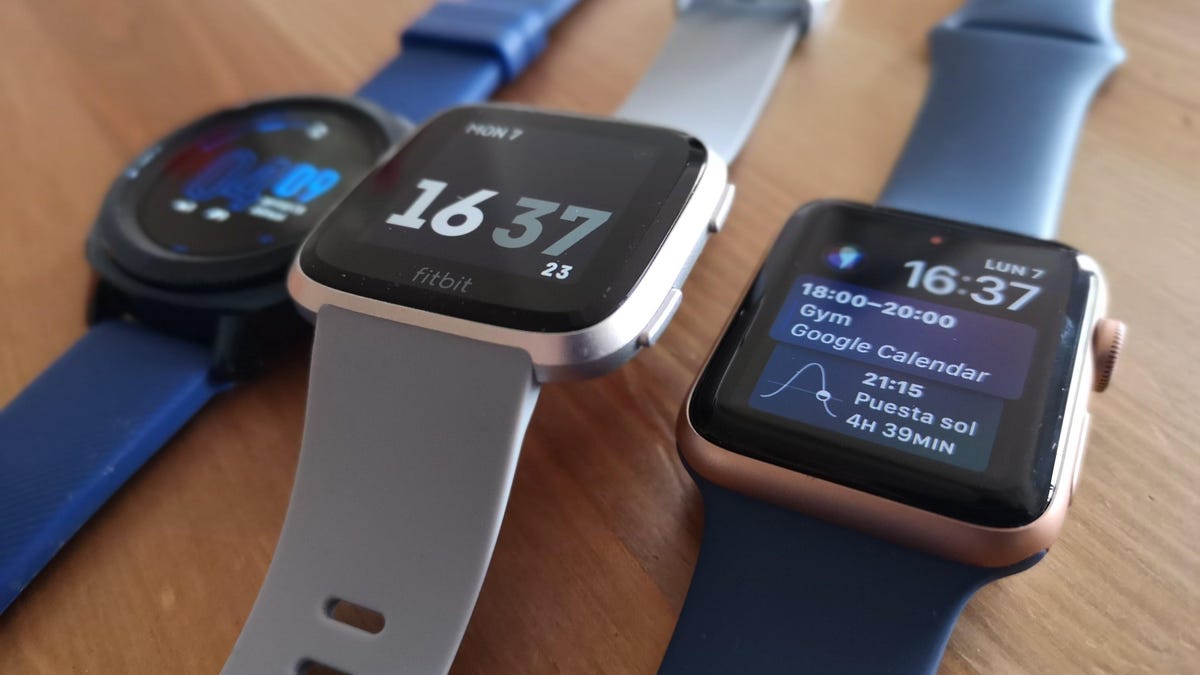Wearables' market growth slows, but they're getting smarter
There are more non-fitness-focused wrist devices and kids' watches than before. And Apple's still on top.

The Fitbit Versa and Apple Watch.
We're not as gung-ho on the basic wrist device as we have been, or on wearables in general, according to IDC's latest report on wearables. But smarter devices are making a bigger stand in the market.
The report, published Monday, is based on first-quarter year-over-year unit shipment growth -- that's the number of wearable devices available for sale in inventories, not the number that have sold to people. IDC says the top five manufacturers are, in order of unit market share: Apple at 16.1 percent, Xiaomi at 14.8 percent, Fitbit at 8.7 percent, Huawei at 5.2 percent and Garmin at 5 percent.
Apple's growth has outpaced the rest of the wearables market, according to IDC. It will be interesting to hear what numbers the company shares about the Apple Watch at today's WWDC 2018 keynote.
Wrist devices comprised 95 percent of the market, but smart clothing -- predominantly step-counting shoes -- rose by about 59 percent. According to IDC's wearables analyst there are more devices such as "'hearables' that feature coaching, audio modification and language translation, other wrist-worn devices focusing on personal safety, and connected watches for children."
Fitness-wearable manufacturer Fitbit also announced a milestone on Monday: It's shipped over a million Fitbit Versas . Plus, after making female health tracking available on iOS and Windows (in addition to Android), it says that within the first two weeks, at least 1.8 million (presumably) women added at least one period to its calendar. Which doesn't surprise me at all.

